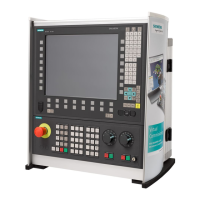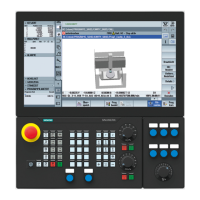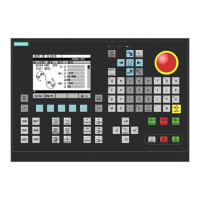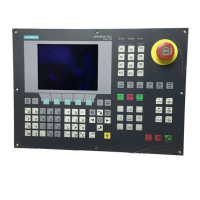Detailed Description
2.7 Structure and functions of the basic program
PLC Basic Program Solution Line (P3 sl)
2-50 Function Manual, 08/2005 Edition, 6FC5397-0BP10-0BA0
The appending of the entry in OB 100 and transfer of DB75 (decoding list) to the PLC must
be followed by a restart. During the restart, the basic program sets up DB76 (signal list).
If the NC program is started at this point and the expanded M function (e.g., M3=17) is
processed by the NCK, this M function will be decoded and bit 2.5 set in DB76 (see
decoding list DB75). At the same time, the basic program sets the read-in disable and the
processing of the NC program is halted (and the "expanded address M function" and "M
function no." are not entered in the associated NC channel DB).
The read-in disable in the channel is reset once the user has reset and, therefore,
acknowledged, all the bits output by this channel in the signal list (DB76).
2.7.10 PLC machine data
General
The user has the option of storing PLC-specific machine data in the NCK. These machine
data can then be processed during power-up of the PLC (OB 100). This enables, for
example, user options, machine expansion levels, machine configurations, etc., to be
implemented.
The interface to read these data is stored in the DB 20. However, DB20 is set up by the
basic program during power-up only when user machine data are used, i.e., sum of BP
parameters UDInt, UDHex and UDReal is greater than zero.
The size of the individual ranges and, therefore, the total length of DB 20,
is set using PLC machine data
MD14504 MAXNUM_USER_DATA_INT,
MD14506 MAXNUM_USER_DATA_HEX,
MD14508 MAXNUM_USER_DATA_FLOAT
and specified for the user in BP parameters
UDInt, UDHex and UDReal.
The basic program stores the data in DB 20 in the following order:
Integer MD, Hex field MD, Real MD.
The integer and real values are stored in DB 20 in S7 format.
Hexadecimal data are stored in DB20 in the order in which they are input (use as bit fields).
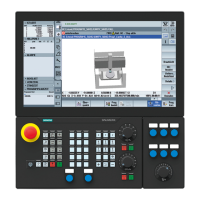
